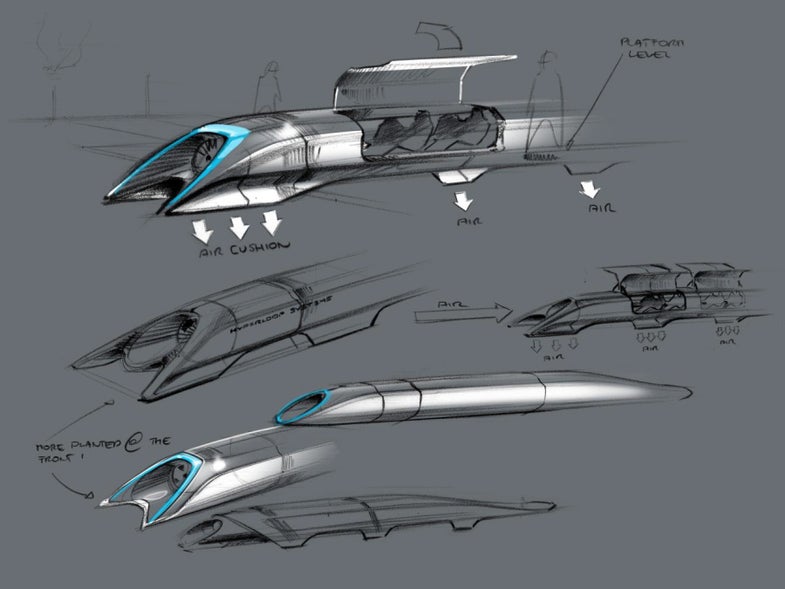Interactive Infographic: What Would A Hyperloop Nation Look Like?
If Elon Musk's mass-transit plan came to fruition, this is what it would mean for travel.

Explore a hypothetical North American Hyperloop network, where total travel time between cities by Hyperloop is represented by color. Click on a city to re-center the map at a different origin. Mouse over a destination city to compare calculated Hyperloop travel time with drive time and to see the additional travel time needed to reach nearby cities. Infographic by Michael Kelly.
In August, Silicon Valley darling Elon Musk—CEO of SpaceX and Tesla Motors—unveiled his concept for the Hyperloop, a high-speed system of 28-person pods that would shoot through low-pressure tubes on air bearings. Musk’s published proposal calls for the Hyperloop to link San Francisco and Los Angeles; pods would blast down the I-5 corridor at 760 mph, reducing the journey from five and a half hours by car to just 35 minutes.
Musk envisions the system connecting cities less than 900 miles apart—beyond that, he writes, “I suspect supersonic air travel ends up being faster and cheaper.” Using the 900-mile limit, we calculated other areas that could be connected by the Hyperloop. Theoretically, pairs such as Memphis and Chicago or Salt Lake City and Seattle could bridge the distance of a morning commute, blending economies and cultures, and reshaping the continent.
COST
Elon Musk estimates that a Hyperloop from San Francisco to Los Angeles will cost six billion dollars, one tenth the proposed cost of California’s high-speed rail project. Transportation experts, however, say he is underestimating the price tag.
CULTURE
A Hyperloop could bridge borders, making San Antonio and Mexico City suburbs of each other, with a journey of 75 minutes. Farther north, New York and Montreal would be only 35 minutes apart.
COMFORT
Even along the relatively straight California I-5, sideways accelerations in Musk’s proposal are three times higher than typical train limits. As the Hyperloop follows curvier highways in other areas, it may need some tweaks to avoid becoming a vomit comet.
SCALE
Each year, people take six million rides from New York to Washington, D.C., on Amtrak and two million rides by plane. Musk estimates a passenger pod departing up to every 30 seconds, which means each Hyperloop could provide 7.4 million commutes a year.

HyperLoop Diagram
How It Works
Pods speed through low-pressure—but not vacuum—tubes perched on pylons. Typically, as a pod moves through a snugly sized tube, it must push the column of air in front of it. That air would build up until it becomes unmanageably heavy—a constraint known as the Kantrowitz limit. But the Hyperloop design includes a fan at the front of the pod that pulls that air in and redirects it to the bearings, thus overcoming the Kantrowitz limit and simultaneously providing a low-friction suspension system. “He’s probably found something of a systemic sweet spot, which makes it kind of creative and interesting. It’s a physical option that really wasn’t on the table before,” says Jim Moore, a transportation engineer at the University of Southern California. But Moore also thinks Musk has underestimated the cost. “It’s not a compelling enough option to penetrate the market.”
This article originally appeared in the November 2013 issue of Popular Science.